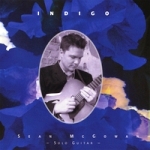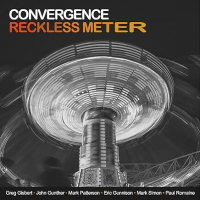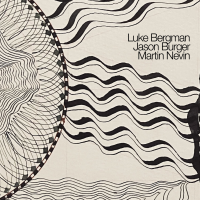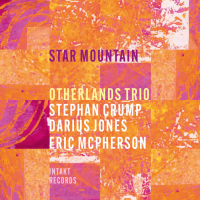Home » Jazz Articles » Extended Analysis » Michael Occhipinti: Michael Occhipinti: The Sicilian Jazz Project
Michael Occhipinti: Michael Occhipinti: The Sicilian Jazz Project
 Michael Occhipinti
Michael OcchipintiThe Sicilian Jazz Project
True North Records
2008
It is a fact of history that modern music can be traced to the seven-note diatonic scale (do-re-mi-fa-so-la-ti)—solffeggio—that came into existence when the Benedictine monk, Guido of Arrezo created its scale. He did so ingeniously, by nominating syllables from the first verse of "The Hymn of St. John," written by Paulus Diaconus in the 8th century. But it is also true, though less known, that the monk was himself influenced by the much older Islamic notation, derived from the Arabic alphabet.
Such disparate sources. And yet they come together, in a conspiracy that could only be inspired by the Muses themselves! No longer, then, should it be such a stretch to give praise that jazz—the flash that ignites the very art of music today—has become the confluence of a myriad musical cultures. And for those who have not done so already, now is as good a time to start: The Sicilian Jazz Project by Michael Occhipinti and his ridiculously brilliant ensemble is here.
In his notes, which it pays to read before listening to this record, guitarist Michael Occhipinti reminds us that Sicily was quite the spot where cultures once collided. The European world and the Mediterranean, Near and Far Eastern worlds met, exchanged ideas in the arts and enriched each other. In July of 1954, says Occhipinti, the legendary musicologists Alan Lomax and Diego Carpitella came to Modica, Sicily to make a series of field recordings. Lomax and Carpitella's research resulted in a glorious catalogue of songs of work and worship. (Anyone who knows Lomax's work will also know that he was the first to record much of the early blues and also responsible for having Leadbelly released from penitentiary to produce some of the most utterly memorable blues recordings).
And so, inspired when he listened to a CD of Lomax's 1954 recordings made in Sicily, as well as prompted by a happy set of circumstances—including the birth of his daughter—Occhipinti returned to the home of his ancestors to listen for himself. And records what may well be one of the most exquisitely memorable music produced in the art of a jazz catalogue. Surely this record will rank with the likes of Bill Laswell's production of Maleem Mahmoud Ghania with Pharoah Sanders The Trance of Seven Colors (Axiom, 1994), Laswell's own production of Bachir Attar's The Next Dream (CMP, 1992), a host of other Laswell productions and Randy Weston's Saga (Verve/Gitanes, 1995). The Sicilian Jazz Project, like the Laswell productions, achieves more authenticity than many productions that have attempted the same expedition—including many by some of the music's most celebrated artists.
Occhipinti has crafted this music with uncommon perfection. Much more than Lomax's field recordings are the standards here. The music stands up to the same high levels of development as the folk arts of Modica, Sicily, the Mississippi Delta and New Orleans. But using the template of the Lomax recordings, Occhipinti has created music that is woven imperceptibly into this very fabric of the folk music that The Sicilian Jazz Project recreates and venerates as well.
Much of the music has a riveting narrative. It may safely be said that this record works, therefore, as an extremely absorbing suite, perhaps unintentional, but completely relevant, nevertheless. "The Almond Sorters," the track that opens the suite, is a remarkably powerful reminder that we are in a realm of vivid dynamics—of brilliant timbres and textures. Maryam Hassan Tollar's vocal soars high above even some of the most exquisite chorinhos of Brasil as she wails out a tale of family destruction in a small town. With intonations that come close to operatic proportions, Hassan-Tollar delivers a stirring performance backed by Occhipinti and his ensemble as they slide their way through the glissandos that the ancient song demands, with surprisingly contemporary virtuosity.
"Ciuri ciuri," is deeply moving as well—a tale of love and betrayal in a pastoral setting, dripping with a myriad of emotions. It is beautifully improvised despite the tightly defined folk forms. By track three, "Vitti 'na crozza," the atmosphere in this listening room is so charged that even with eyes wide shut lights appear to go out in flashes. The project folk singer, an unbridled talent, Torontonian Dominic Mancuso turns modern gnawa musician/storyteller as he brings the "skull" (crozza) to life singing in its voice of the pain of dying a lonely death. It is a comical tale brought to life in all of his indominatible raspy voiced brilliance.
Saxophonist Ernie Tollar and the wonderfully talented Brasilian accordionist Luis Simao take center stage in the first part of "Jolla." This is a deceptively simple melody with a hidden sophistication in its rhythms that are pulsed at 12/8. Violinist Hugh Marsh joins the stellar cast featuring the high-flying virtuosity of Tollar and the ringing melodics of Simao. The song takes off into the contemporary realm of jazz as the second part breaks into rhythm. Mancuso's raspy vocalastics burn like cold fire in the balladic "Nun ti lassu" as he cries out his refrain to a lover..."I won't leave you... I won't leave you." Mancuso has real duende. He inhabits the songs he sings like they are a second skin. And, as a result, his "blues" are as powerful as the best of his peers who haunt the Delta and the desert, both far, far away. He unlocks the power of the songs as Cuban Santeria do in ritualistic vocals. Like them, it is as if the singer has become the song.
"Cantu ri li schuggiatura" is a classic work song, a blues lament. It is the perfect vehicle for the Occhipinti's bending, wailing guitar as he weeps his way through the melody, when he does play it, and stretches exquisitely through his stellar solo. Tollar once again soars in the azure blue of the song's celestial thrust. Trumpeter Kevin Turcotte takes a bow here as he and Tollar swap roles as lead voices. And here's the other thing: there is a wonderful contrast between the traditional folk line taken by Mancuso and the unrivalled contemporary nature of Tollar and Turcotte. It is almost as if the taut, climatic ending of this wonderful suite is on its way, as indeed it is.
"The Sulphur Miner" is where it all comes to a head. This is the high point of an altogether exquisite record. Hugh Marsh bows his way on his violin like a whole chorus of wails buffeting Mancuso's vocals. Tollar joins in and trades lines and inner and secret harmonics with Marsh, until they are joined by the percussion of Rick Lazar and Barry Romberg's drums. Marsh soars overhead as the bridge approaches and Occhipinti's guitar and Simao's accordion take this hypnotic work song to great heights, building such unbearable tension that is only broken by a return to the singular wail of the sulphur miner's lament.
"The Ribbon Dancers," the record's penultimate track, is a beautiful polka-like song. A harvest dance that breaks the darker moods prevalent on the record as it worked its way through pastoral life. Occhipinti interprets the music in his inimitable style, using the metaphor of jazz. With a quirkily tuned axe, the guitarist plays horn-like lines as Charlie Christian used to. His tone too is luscious and ripe. Turcotte has another star turn here. And Tollar is, as usual, stellar. "Nnuena," another pastoral gem, concludes the suite, but not before it zips delightfully across the universe, to the reggae world of the Caribbean. Tollar takes his alto saxophone on an expedition here and masterfully bends tonal rules as he tints the lines of the song's folkloric references with an utterly modern jazz palette.
So why is this record so important? It does for jazz what many Laswell productions have done for decades and it also does something more: the accessibility that made trumpeter Miles Davis' Sketches of Spain (Columbia, 1959) a classic. The Sicilian Jazz Project seems headed just there and sooner rather than later. For Michael Occhipinti has been able to grow, learn and draw inspiration from the greatest jazz and other music of the past in spirit and with feeling to make music that is today so utterly relevant, meaningful and memorable.
Tracks: The Almond Sorters; Ciuri cuiri; Vitti 'na crozza; Jolla; Nun ti lassu; Cantu ri li schuggiatura; The Sulphur Miner; The Ribbon Dancers; Nnuena.
Personnel: Michael Occhipinti: acoustic and electric guitars, handclaps; Roberto Occhipinti: double bass and electric bass; Kevin Turcotte: trumpet (1, 2, 4, 6 - 9); Louis Simao: accordion, pandero (1, 2, 4, 6 - 9); Barry Romberg: drums, bells, shakers (1, 2, 4, 6 - 9); Dominic Mancuso: vocals, handclaps (3, 5, 6, 7); Maryem Hassan-Tollar: vocals (1, 3); Hugh Marsh: electric violin (1, 3, 7); Annalee Patipatanakoon: 1st violin (1, 5, 7); Lynn Kuo: 2nd violin (1, 5, 7); Kathleen Kajioka: viola (1, 5, 7); Roman Borys: cello (1, 5, 7); Rick Lazar: riq, dumbek, shekere, handclaps (1, 3, 7); Levon Ichkhanian: oud (1).
Personnel
Michael Occhipinti
guitarAlbum information
Title: Michael Occhipinti: The Sicilian Jazz Project | Year Released: 2008 | Record Label: True North Records
Tags
PREVIOUS / NEXT
Support All About Jazz
 All About Jazz has been a pillar of jazz since 1995, championing it as an art form and, more importantly, supporting the musicians who make it. Our enduring commitment has made "AAJ" one of the most culturally important websites of its kind, read by hundreds of thousands of fans, musicians and industry figures every month.
All About Jazz has been a pillar of jazz since 1995, championing it as an art form and, more importantly, supporting the musicians who make it. Our enduring commitment has made "AAJ" one of the most culturally important websites of its kind, read by hundreds of thousands of fans, musicians and industry figures every month.





















